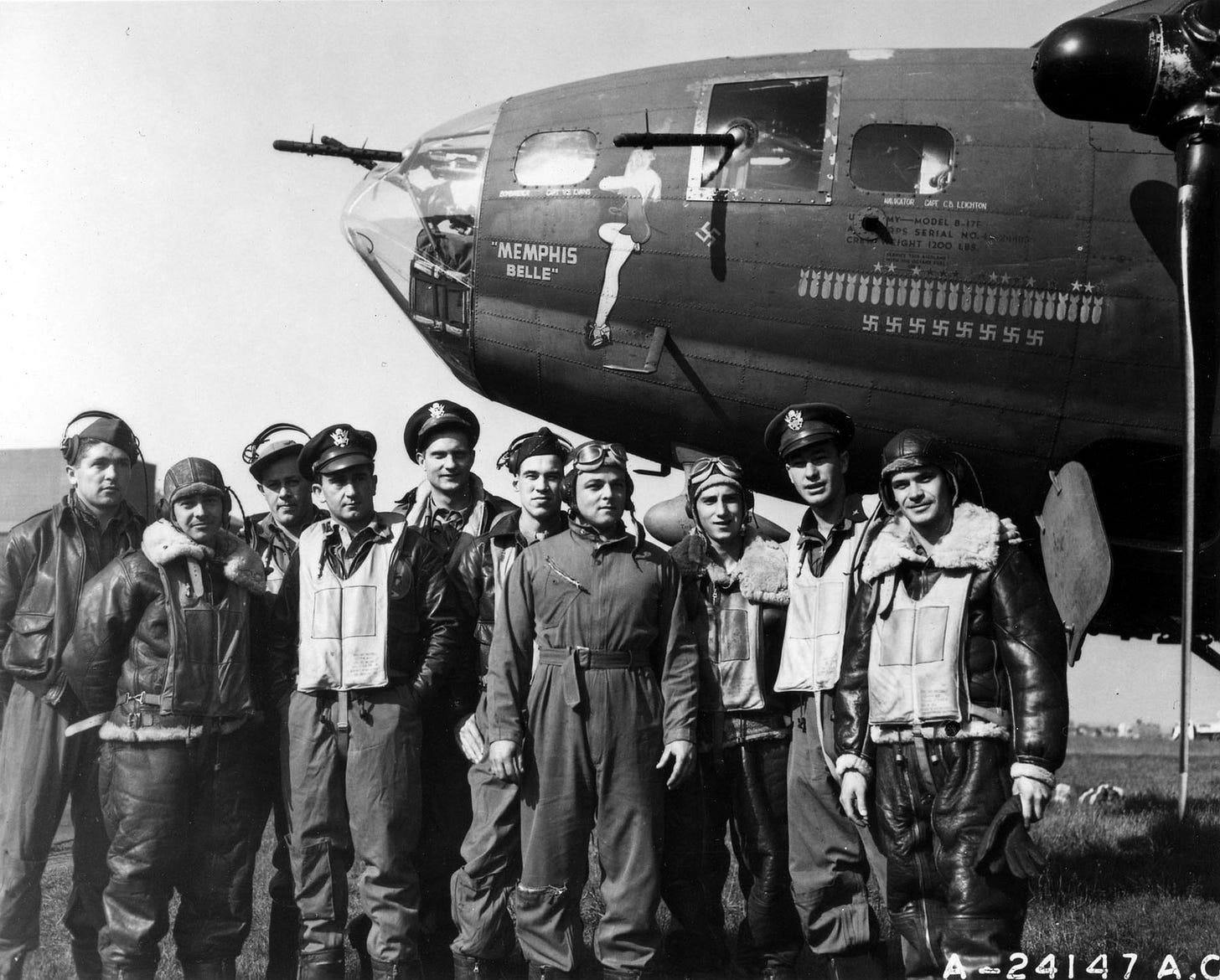TDIH: Memphis Belle
Memphis Belle became one of the most famous bombers to emerge from World War II.
On this day in 1943, a B-17 Flying Fortress completes its 25th combat mission without losing a member of its crew. Memphis Belle would return to the United States, embark on a war bond tour, and become one of the most famous bombers to emerge from World War II.
She was nearly sold for scrap metal after the war, but Memphis mayor Walter Chandler saved her for $350. Today, she’s been refurbished and sits at the National Museum of the U.S. Air Force in Dayton, Ohio.
Memphis Belle’s survival was no small feat.
“If you want just one word on how we were able to go through the hell over Europe 25 times and get back without a casualty,” Captain Robert K. Morgan later said, “I’ll give it to you. It is teamwork. Until you have been on a Flying Fortress in combat, you can’t know how essential that is.”
Indeed, the men on his crew were so focused on teamwork that they developed a ritual of sorts. They would gather around the plane before a mission and recite an informal pledge: “If only one airplane comes back today, it’s going to be us.” It reminded them, as Morgan would later say, “that we were no longer ten individuals but one interdependent unit.”
Memphis Belle finished her 25th mission on May 17, 1943—a huge milestone! It meant everyone on the crew could go home. Nevertheless that 25th mission wasn’t necessarily her toughest endeavor.
Her crew would never forget an earlier mission on January 23. She nearly didn’t come home that day.
An enemy plane had attacked Memphis Belle, coming at her nose. Morgan immediately sent the plane into a steep climb. “Standard procedure would have been to dive,” he later wrote, “but that would have smashed us into the bomber group right below us.”
The climb saved the nose of his plane, but exposed its tail instead. Morgan soon heard his tail gunner yelling across the intercom: “Chief, the tail is hit, the whole back end is shot off! Chief, it’s blazing! The whole tail is leaving the plane!”
Fortunately, another report soon followed: “Oh, the fire’s gone out!”
Morgan had never left the cockpit in the middle of a mission, but he had to see this one for himself. Could he get the plane back to base? Or would he be ordering everyone to bail out?
“I could not permit myself the luxury of panic,” Morgan later said of those tense moments. “If I showed signs of terror, it could spread through the entire crew. . . . I told myself, Be scared later. Just find out what’s wrong, dammit!”
As it turned out, the tail was not gone, just badly damaged. The stabilizer and rudder were both basically unusable. Morgan returned to his cockpit seat, knowing that he had multiple problems on his hands: How would he land the big bomber? And how would he keep the Germans from realizing that his plane was barely staying in the air in the meantime?
Until he reached safe air space, he would need to make the plane look more functional than it was.
He got on the intercom. “Guys, listen. She’s hurt. She’s hurt pretty bad. She’s hard to maneuver. I have enough alternate methods that I can fly this airplane, and that’s what I intend to do. So let’s all get back to your jobs. Fend off those fighter planes. Do the same things you’ve always done, and I’m going to take you home.”
Memphis Belle was a team, and that team got back to work. And wouldn’t you know it? About two hours later, Morgan landed that plane safely at Bassingbourn.
Sources can always be found on my website, here.





Memphis Belle was amazing and the crew more so. The lessons learn have been shared in aviation circles for years.
Thanks Tara for highlights of this journey.
Teamwork - absolutely!
I would add God’s protection too!
I saw the Memphis Belle in Dayton. But I didn’t know the rest of the story. Thank you Tara!